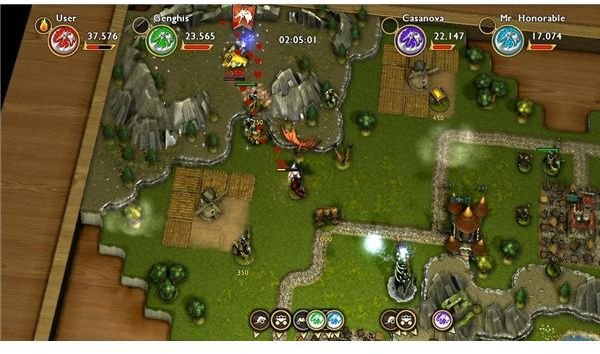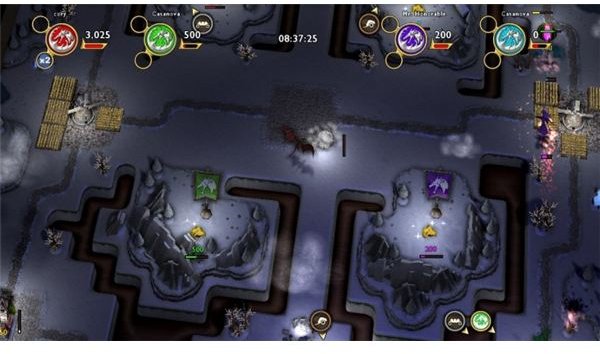Hoard Game Review: It's All About the Loot

Get Ready to HOARD
Stealing from a dragon’s hoard is a popular theme in fantasy novels and games. But has anyone ever considered how the dragon felt? I imagine it would be quite a shock to come back and find someone had removed your favorite gem-encrusted magical sword!
Hoard puts you in the claws of the dragon.
Gameplay (3 out of 5)
Hoard is a game of riches. You play an unnamed dragon in search of treasure to increase your hoard. Since you’re a dragon, you’re not building your treasure by making keen business deals or working overtime at the office. No, you’re gathering wealth in the only way you know how - knocking stuff over, burning it down, or making it dead. And then taking whatever pretties are left over.
Although Hoard is a real-time game, it has a board game feel, which is reinforced by the gameplay as well as the graphics (when the game loads the scenery is laid down in a series of tiles). Like many great board games, Hoard is competitive (with the obvious exception of the single co-op mode) but players do not always fight each other. The goal is to obtain the largest hoard, and while there will be times when it’s necessary to wound an opposing dragon, much of the game is focused on collecting treasure.
Hoard is a game with many moving parts. When you start a map, there’s nothing on it - the villages, guard towers and castles grow dynamically. In theory, you can increase your riches by letting a village grow before pillaging it. In practice, this mechanic falls apart because most games are played with several other AI or player-controlled dragons. They’re just as likely to reap the rewards as you, so smash-and-grab becomes the common strategy.
The biggest problems with Hoard, however, are perpherial to the gameplay. The AI is bad, which makes single-player boring. This may lead you to turn to multiplayer - but good luck finding a match, and even if you do, you’ll find that the mutliplayer communications option on the PC are barely there.
Graphics and Sound (3 out of 5)

Hoard’s graphics don’t need to be much, but they reach a reasonable level of competence. The game map plays homage to board games, so you will see a wood table beyond the boundaries of the kingdom you’re in. The game is colorful and the models used for various villages and knights and dragons are reasonably well drawn. On the other hand, dragon’s breath is rather pathetic; it’s a strange pale glowing stream rather than the bubbling fire of destruction you’d expect.
The sound design is functional. There are a lot of audio ques that help players determine whats going on. The cartoonish swooning reminds you that you’ve picked up a Princess and you need to go back to your hoard to hold her for ransome. The flow of ka-ching reminds you that you still need to dump some gold off at your hoard.
Only the music can be annoying at times. There are a number of different tracks in the game, and they all have an amateur-hour quality to them. What puzzles me is the variance between the them. Some are casual, while others are intense electronic bits that don’t fit the game. After a short time, I simply decided to turn the music off.
Conclusion (3 out of 5)
Hoard suffers from the same problem as many other games that have tried to introduced board game mechanics into a computer format. The game itself is acceptable, but without friends nearby to enjoy it with you, the fun is significantly diminished. I can see Hoard being a hoot if I was playing it with three friends over LAN. But how often does that scenario occur?
The problem is amplified in Hoard by the lack of single-player options. There is no story mode of any kind, and only one mode that is avaialble only in Single Player, a survival mode called HOARD. Even the maps are shared. If you’re on your own, there’s not much game to be found.
